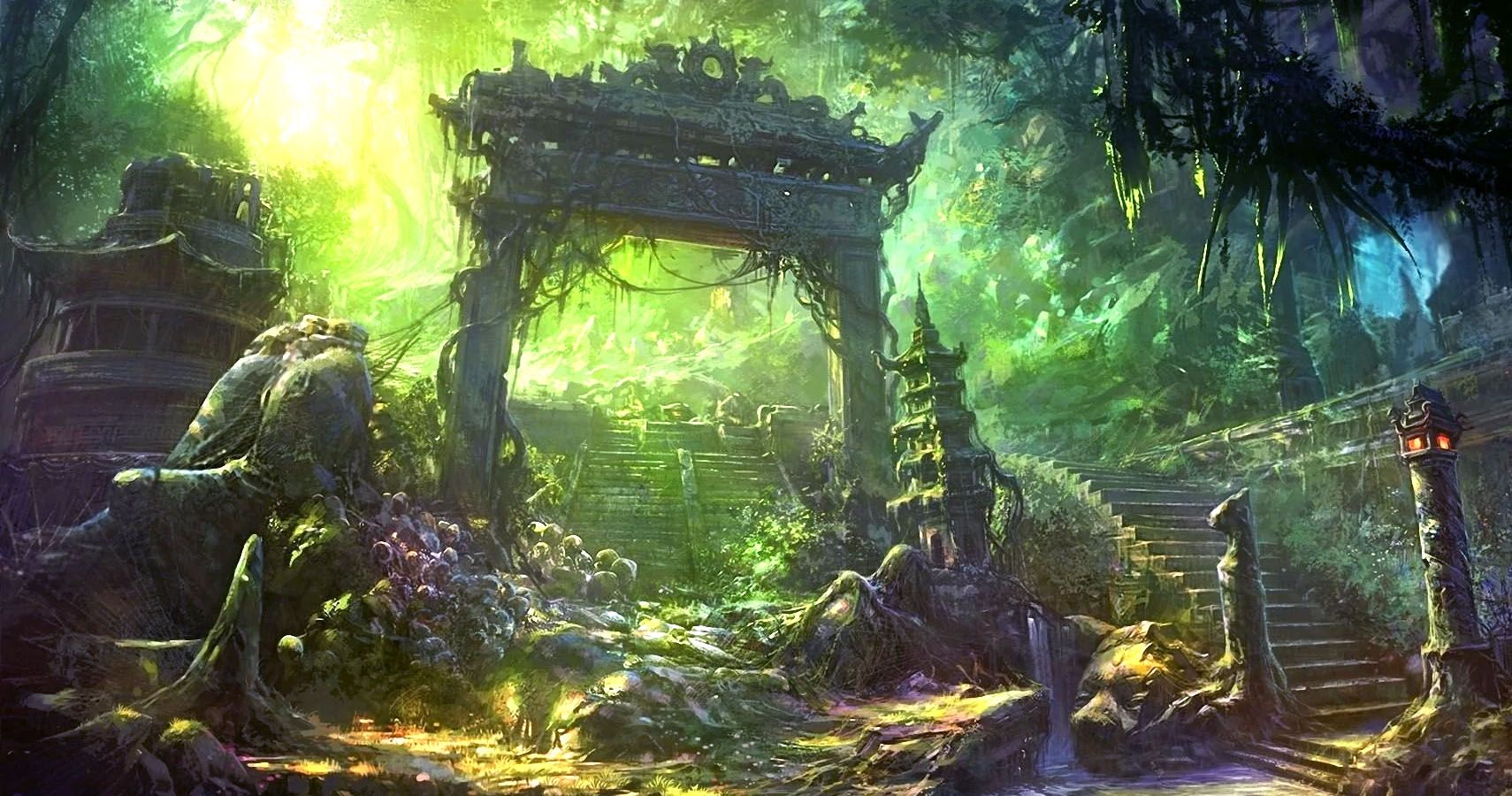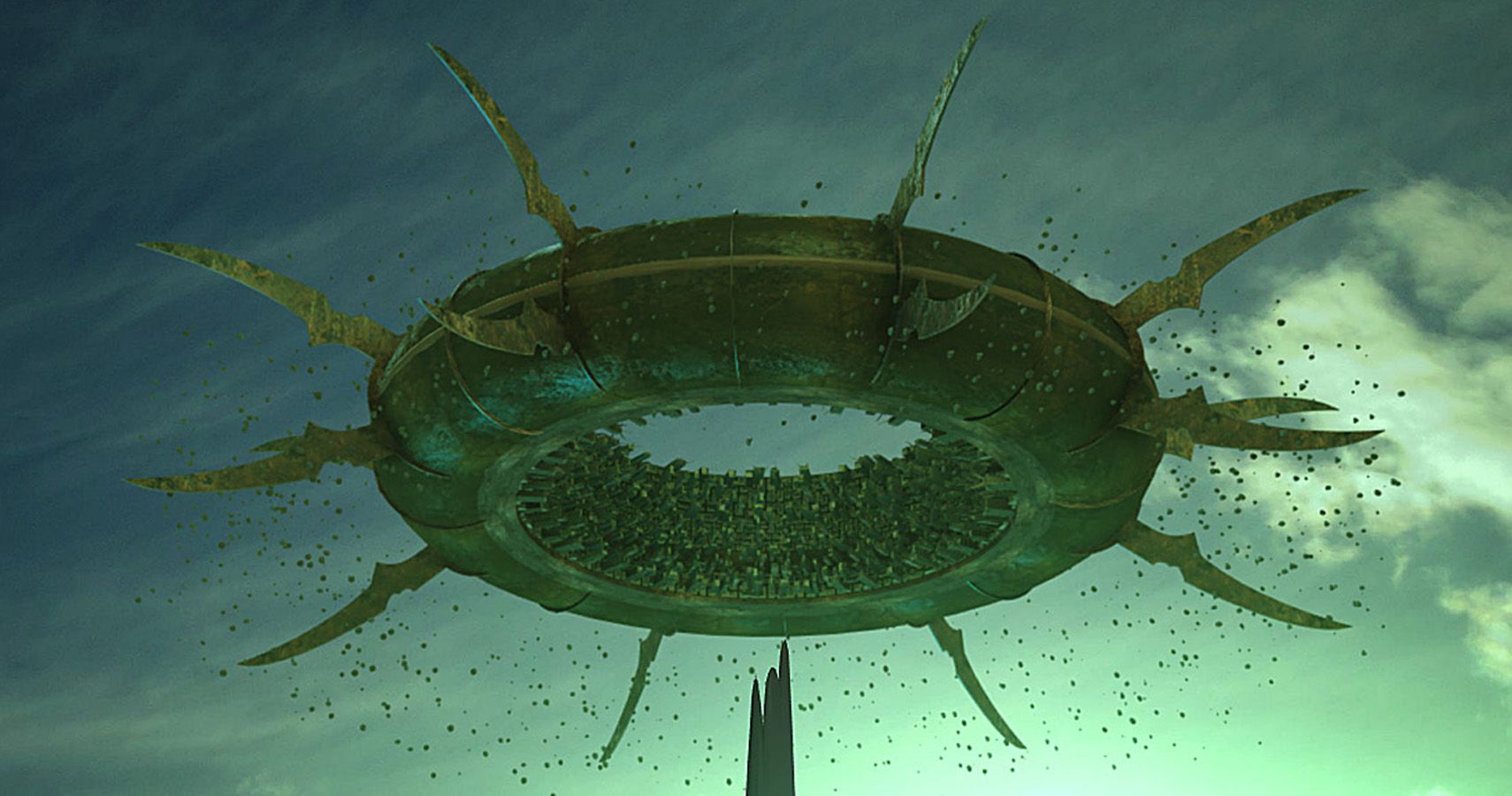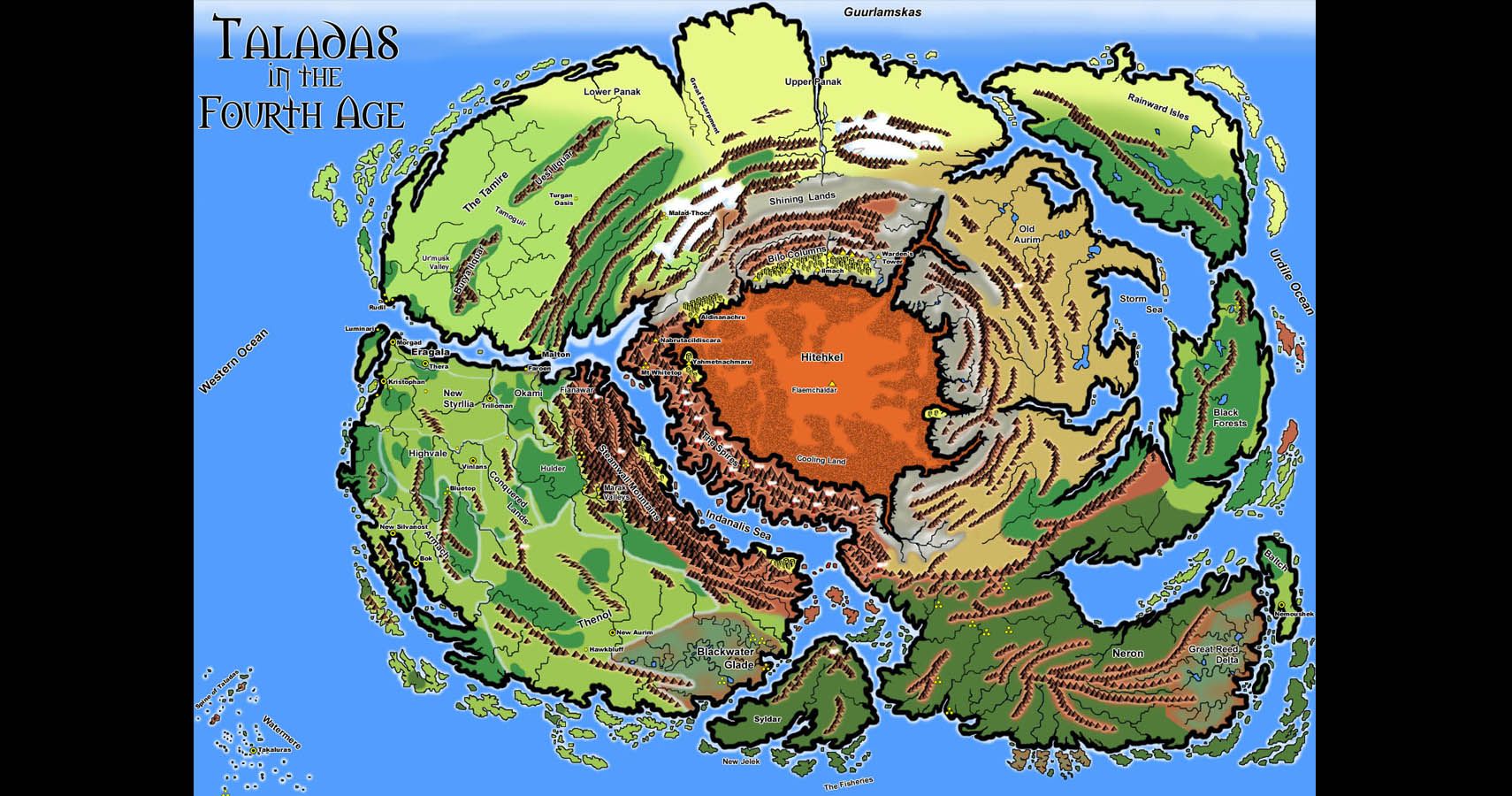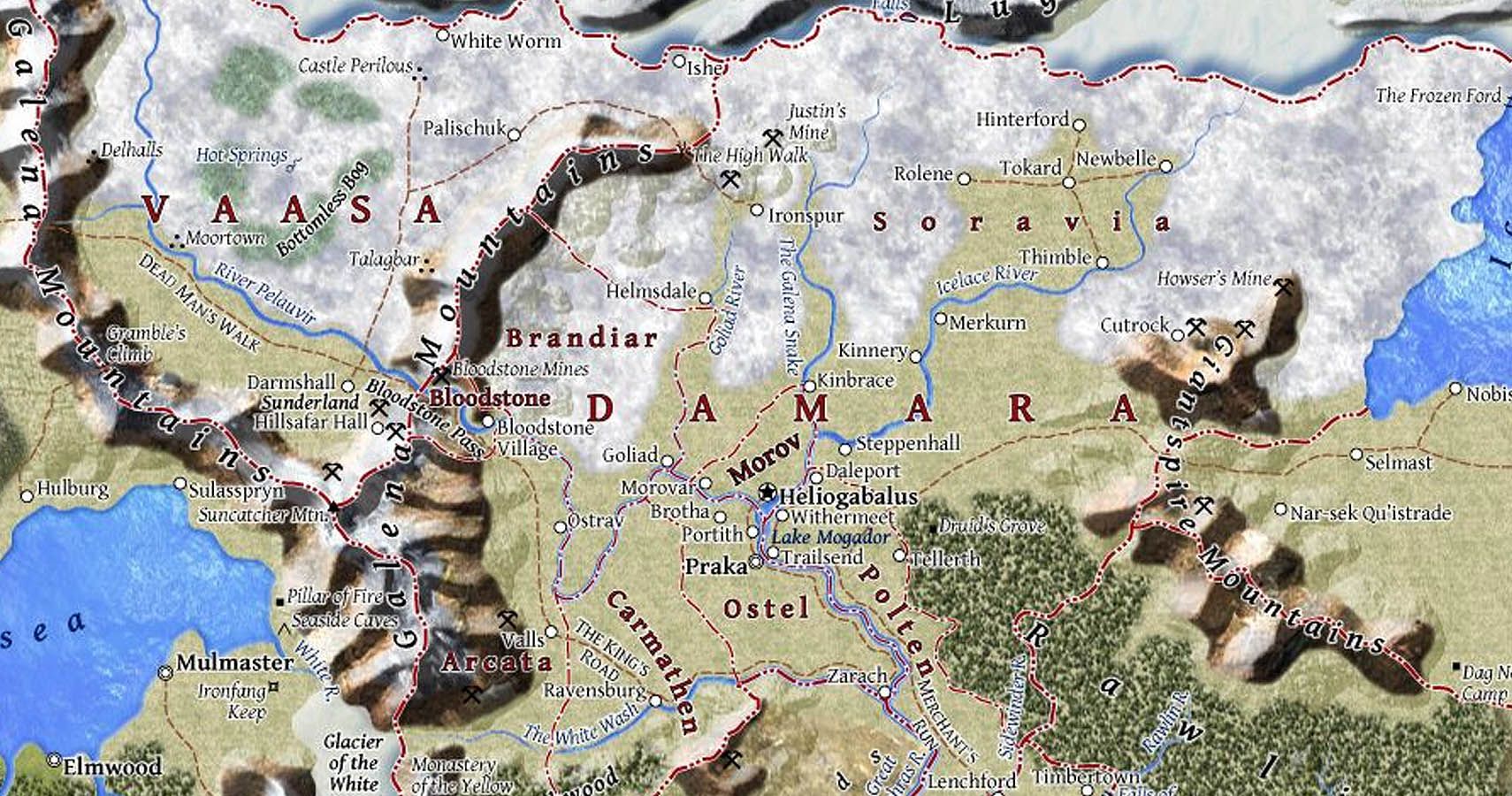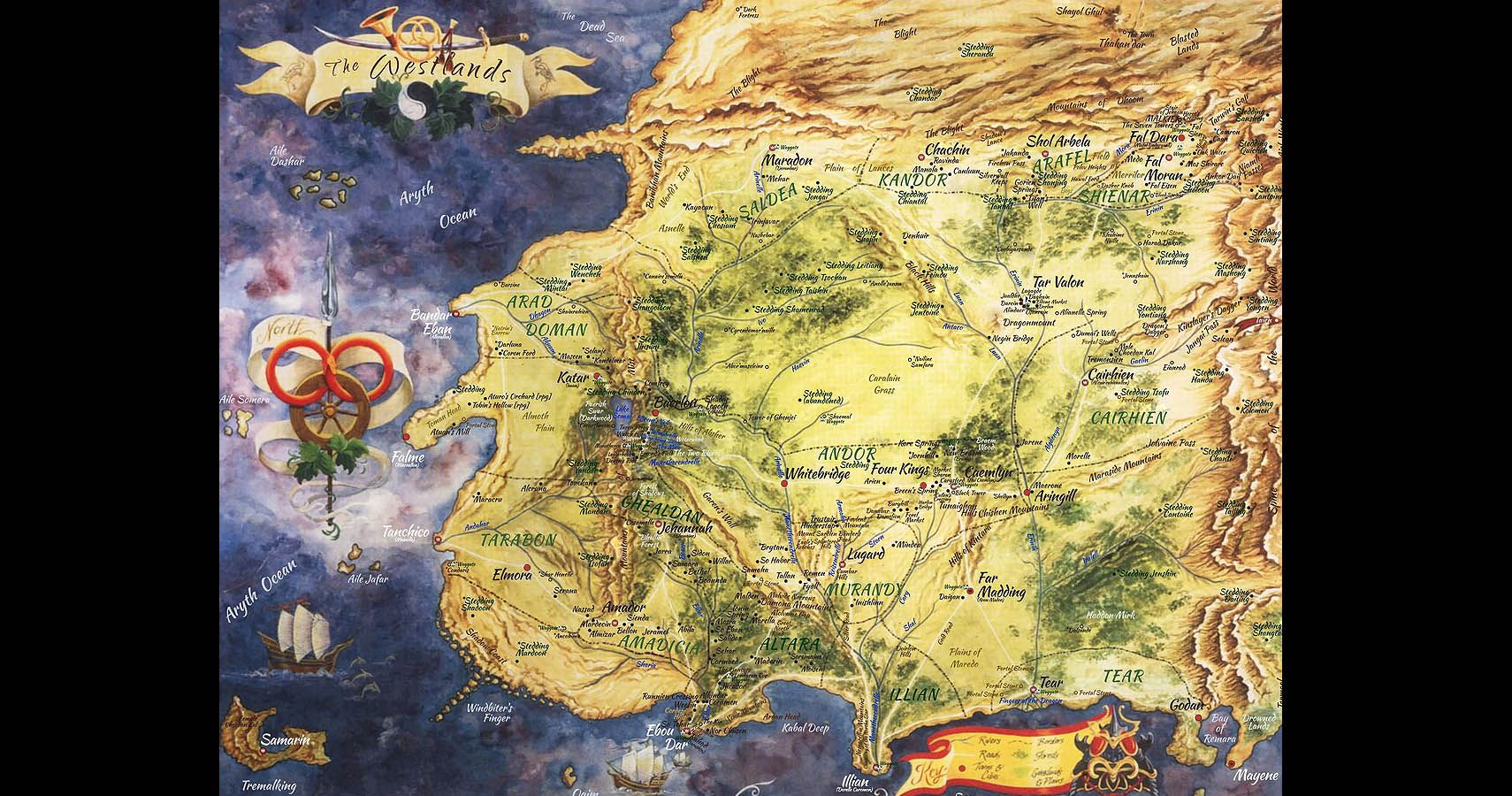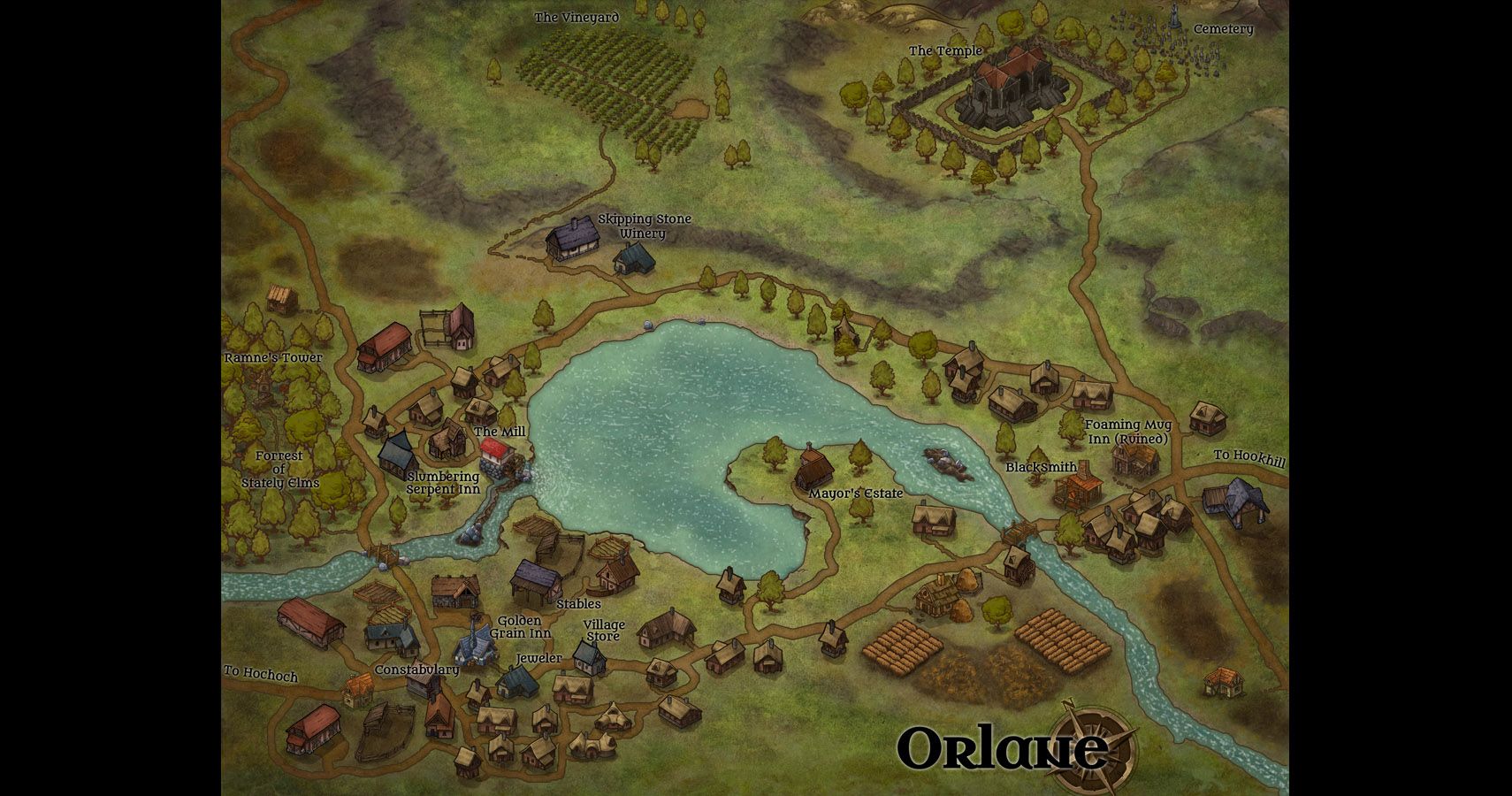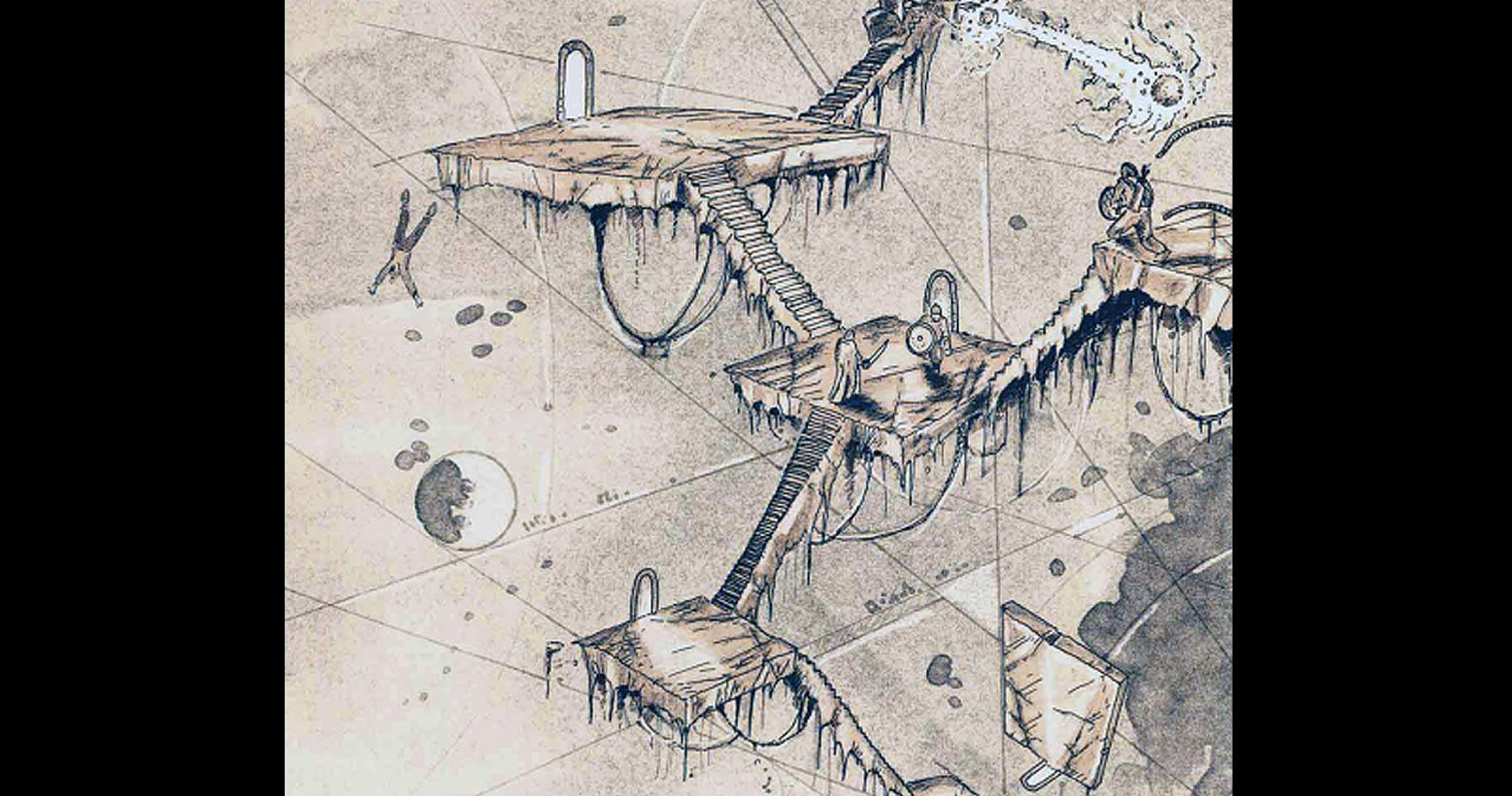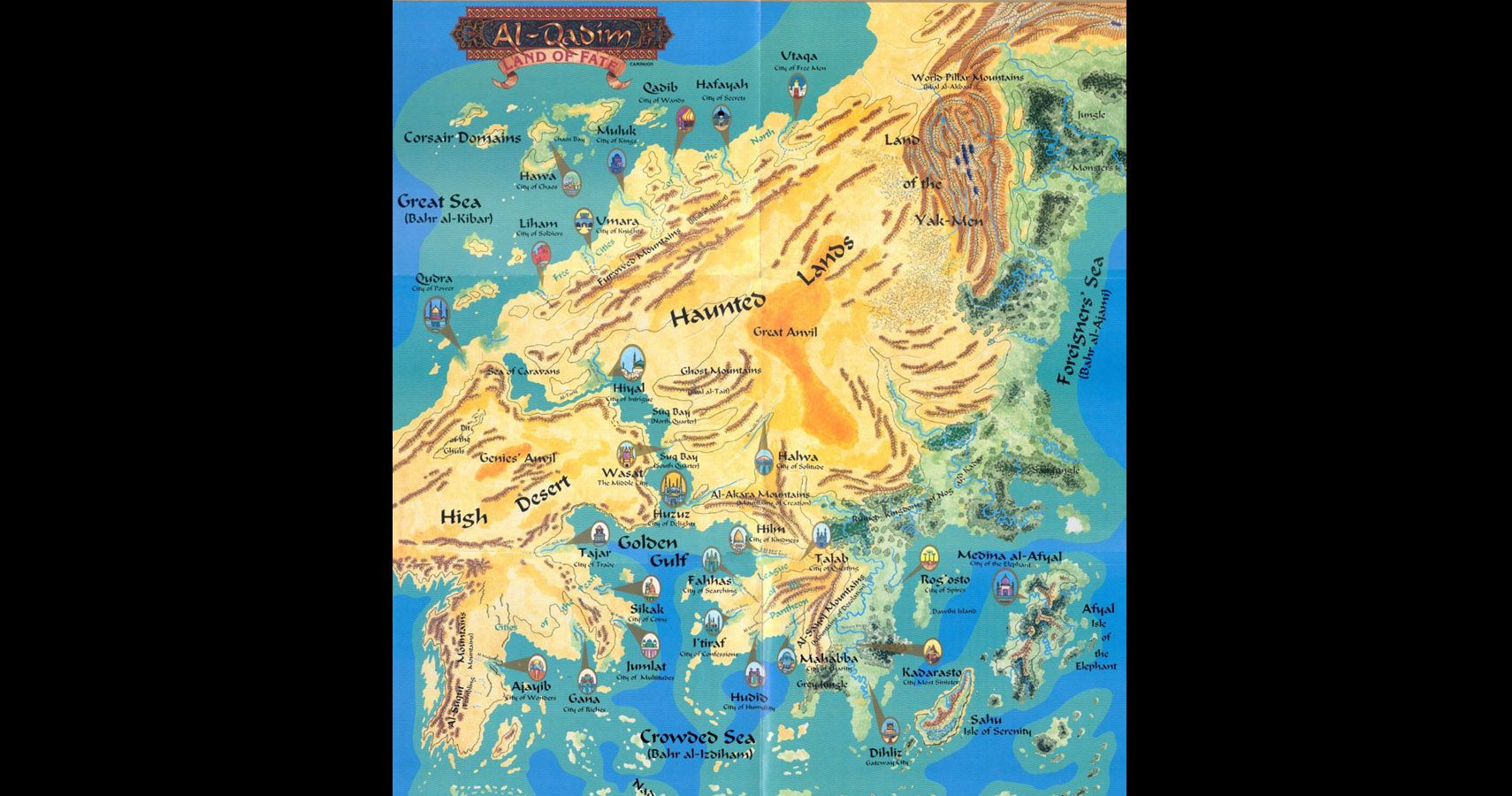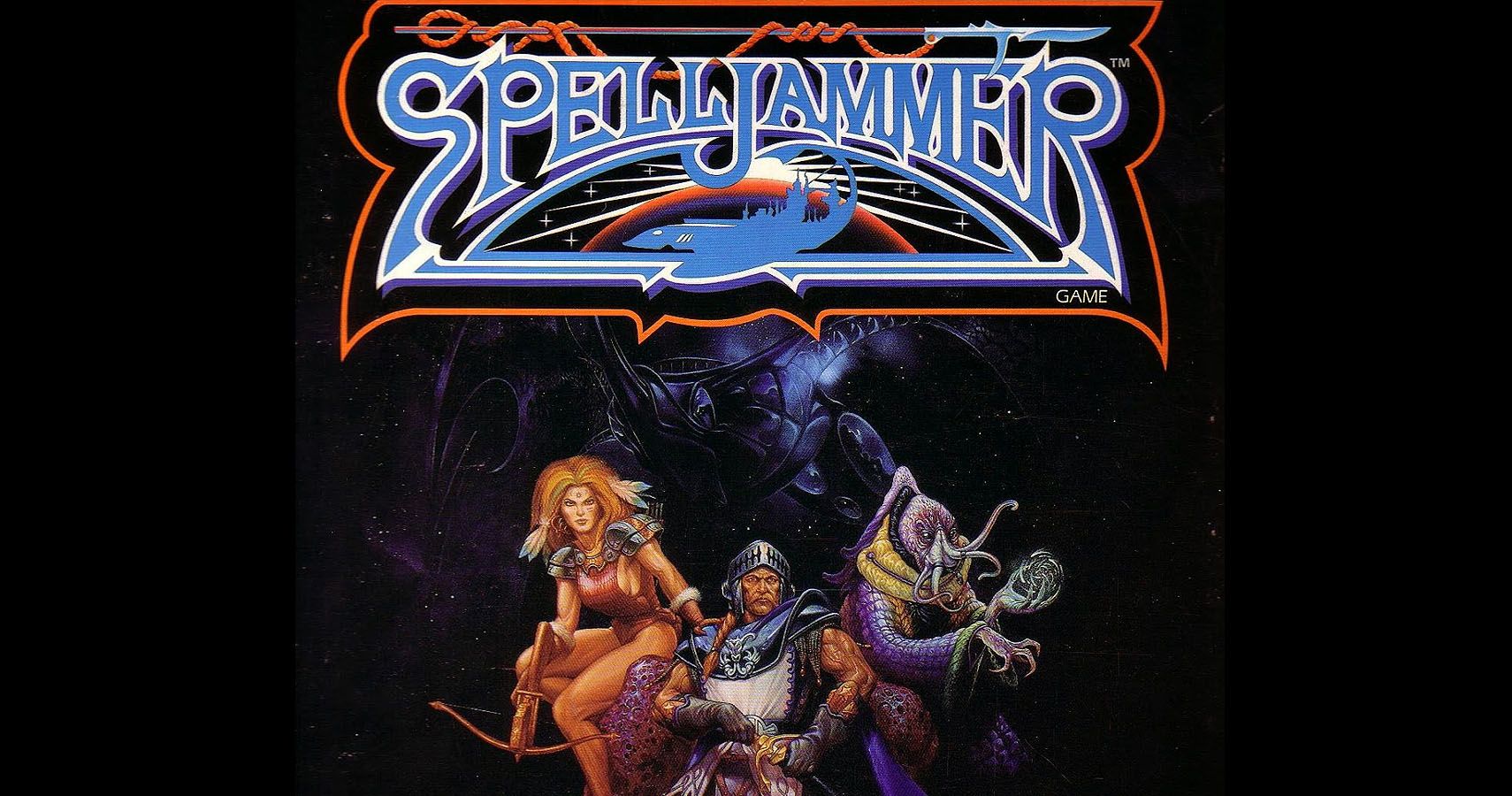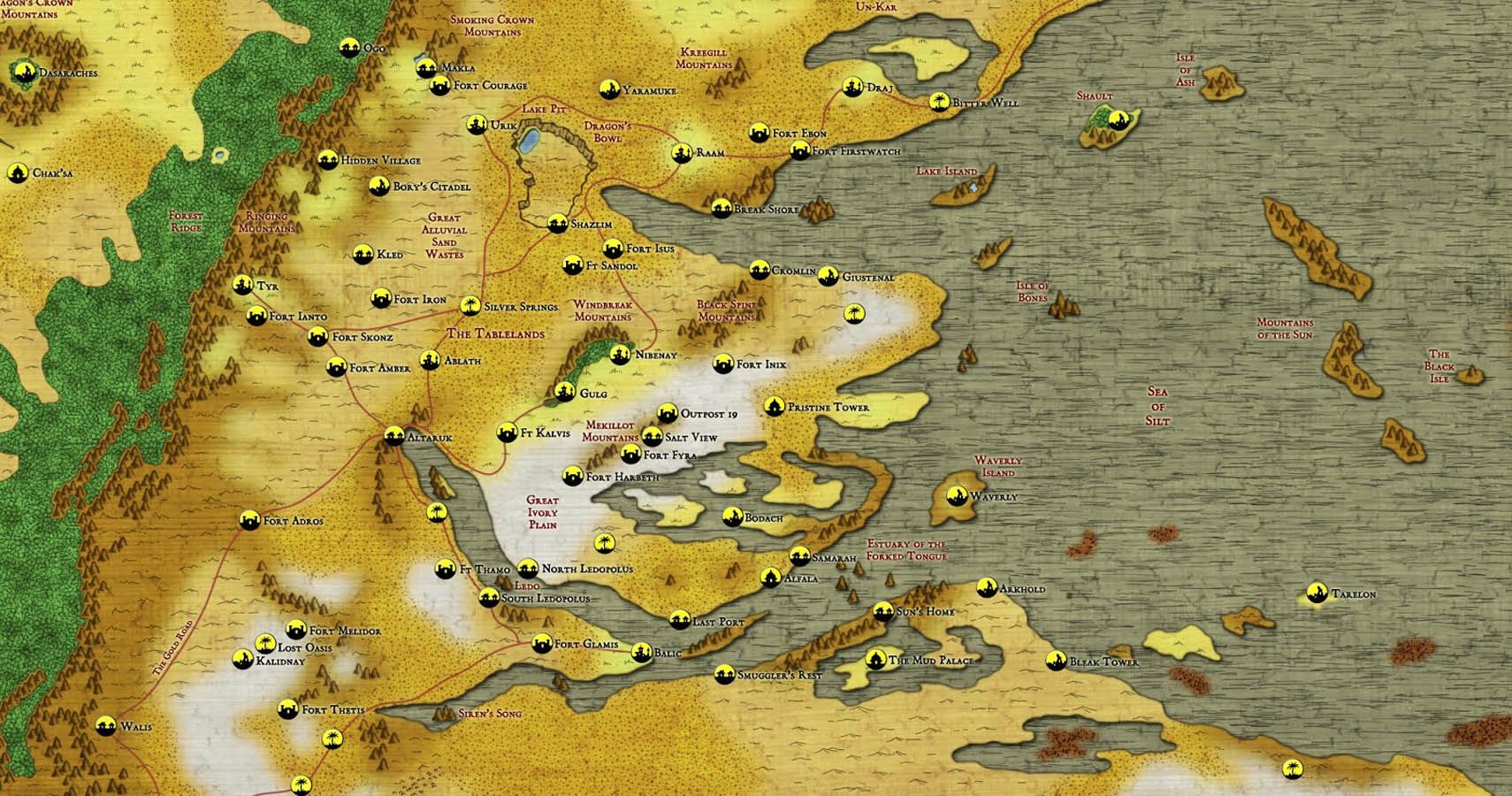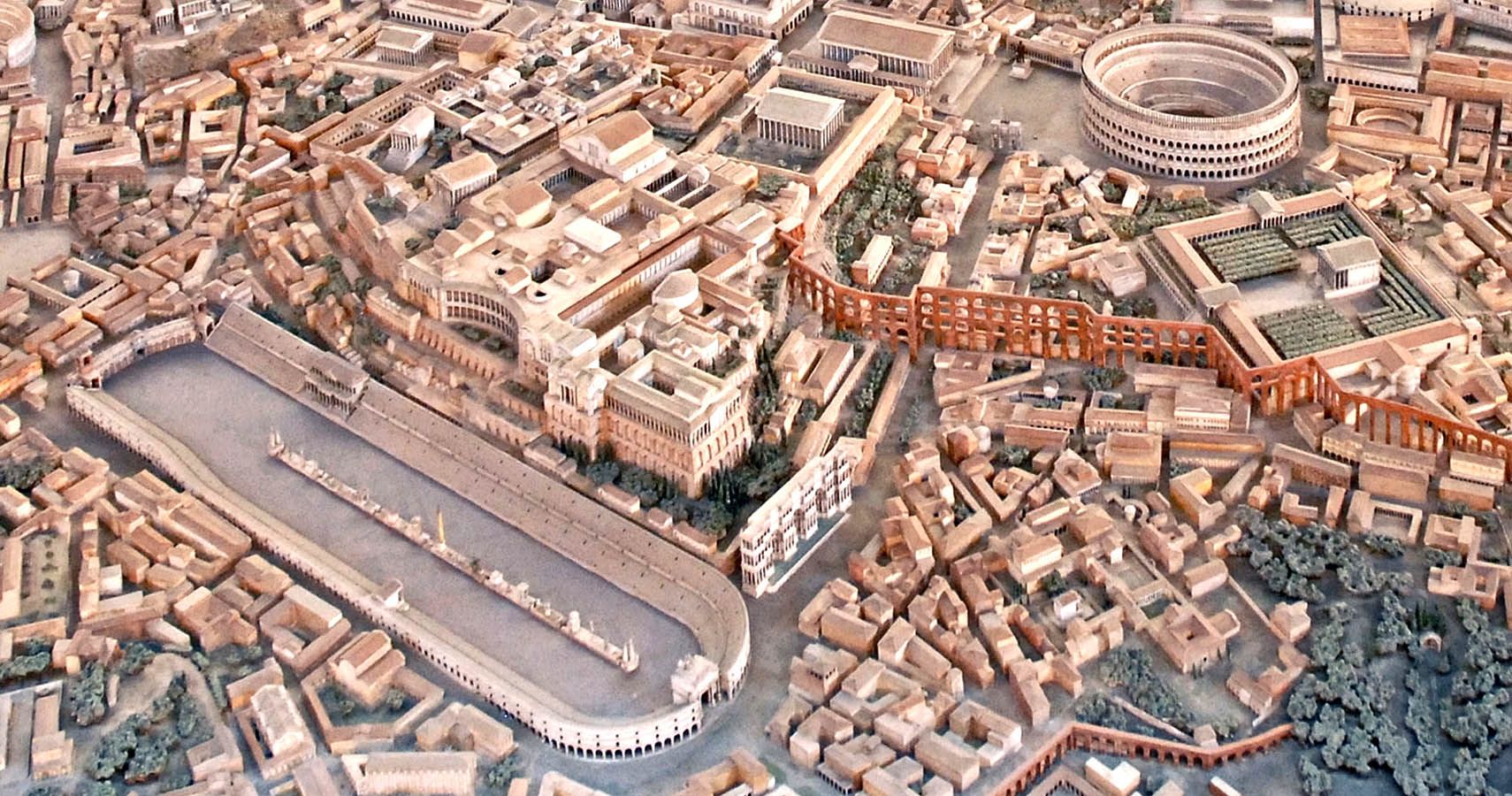There seems to be an almost infinite amount of choices of settings for a
D&D campaign. The popular settings, like Waterdeep, are of course fun, but sometimes it is better to go to a less used location. Removing the players from a familiar setting can really heighten the anticipation factor that is lost when campaigning in the same area repeatedly. Below are some suggestions for often overlooked settings that will definitely breathe some new life into your gaming sessions. When applicable, the entries will also examine possible problems that might arise for DMs when using these settings.
10 Sigil
In general, the entire Planescape setting seems to be neglected. The main reason for this is that it takes fairly strong characters and experienced players to survive in a plane-hopping campaign. Sigil is essentially the capitol of the outer planes – occupying a spot at the top of the Concordant Opposition that is considered the nexus of the Higher and Lower planes. Sigil is a grand city, full of the usual sights found in the cities in the Prime Material, but also filled with residents of the Outer Planes – like devils, demons, archons, and even a modron or two occasionally.
9 Taladas
When it comes to the campaign setting of Krynn (Dragonlance), nearly all adventures take place on the continent of Ansalon. Ansalon was the setting for the best-selling Dragonlance Chronicles by Margaret Weis and Tracy Hickman. It is natural that players will want to visit the locations made famous in those novels – like Solace and Palanthas. Far removed from Ansalon is the continent of Taladas, and it is an excellent alternative for a Dragonlance adventure. The bulk of the continent is ruled by the Minotaur Empire; which really forces players to mind their actions.
8 Damara
Nestled far to the north of Faerun in the Forgotten Realms setting, Damara is an excellent choice for a campaign. Damara is a kingdom ruled by the paladin-king Gareth Dragonsbane and his band of powerful companions. This area is full of dangers for mid-to-high level characters. The main antagonist in the area is the lich Zhengyi, who rules from Castle Perilous. The area is also the home to numerous orc and goblin tribes, and is known to be infested with werewolves and dire wolves. DMs wanting to use this area should read Promise of the Witch King by R.A. Salvatore.
7 The Wheel Of Time
The voluminous Wheel of Time novels, by Robert Jordan, offer a D&D like setting, but are different enough to keep players unfamiliar with the world on their toes. The overarching plot is that there is an encroaching evil that will be defeated by the chosen one. There are some fantastic D&D supplements for adventures in this realm. D&D sessions can get stale if adventures constantly take place in the usual worlds, but using the Wheel of Time world will offer new monsters to fight, a new system of magic-use to try, and new locations to explore. Reading the novels isn’t necessary, but it would help to read the Cliff Notes to get the basic knowledge of the world’s history and peoples.
6 Orlane And The Surrounding Areas
Orlane is a small village located in the western reaches of the Greyhawk campaign setting. The city was the “home-base” in the adventure module titled “Against the Cult of the Reptile God”, and this module is a great way to introduce the area to the players. There is a lot of adventure to be had in the area surrounding Orlane, and the landscape of this area is varied enough to make it suitable for nearly any campaign. To the north is a large forest ruled by an elven kingdom, to the south is a huge swamp filled with lizard-folk and dragons, and to the west is the fallen kingdom of Geoff and the Lost Lands – which were overrun by giants and their minions.
5 The Infinite Staircase
Many D&D players have never heard of this location, which is a shame as it offers an infinite venue for exploration and adventure. The Infinite Staircase is an Outer Planes location that has links to nearly every place in the D&D universe. There are an infinite number of doors along the staircase, so it is great for those impromptu adventures that allow DMs to run wild. There is an adventure module set on the Infinite Staircase that has eight separate, but linked adventures. The module is for 2nd edition rules, but it is not too difficult to convert it to 3rd or 5th edition rules.
4 Zakhara: The Lands Of Fate
When most D&D players think of a campaign setting with an Arabian flair, they think of Calimshan. Far to the south of Faerun is the land of Zakhara; which is a setting that uses the stories in 1001 Arabian Nights as inspiration. The land of Zakhara (also called Al-Qadim) has its own gods, and some unique classes – like the Shi’ar class that uses the denizens of the Inner Planes, like the djinn and efreet, as a source of power. This setting also forces some classes to change things up. For instance, the realm of Zakhara is a desert, so wearing plate mail is not advisable – and will in fact cause those wearing heavy armor to incur penalties.
3 The Spelljammer Setting
Okay, this entry isn’t as much of a single location as it is a campaign setting. The Spelljammer setting is dominated by the flying spelljaming ships that travel the space between the realms where most adventures take place. This is an excellent option for DMs and players that don’t want to be stuck in one particular realm. This setting has lots of new creatures and challenges for the players. Many of the standard enemies in a D&D campaign, like orcs (called “scro” in the Spelljammer setting) and lizardmen, are present, but have been given an upgrade - and are even playable races.
2 Dark Sun
Of all the D&D settings, Dark Sun (also called Athas) is probably the least used, and seems to be all but forgotten nowadays. One reason it is often overlooked is that a lot of DMs don’t feel like dealing with psionics – which is prevalent in the Dark Sun setting. Another reason is that there isn’t much variety in this realm; the vast majority of the Dark Sun setting is a barren desert landscape. However, the realm of Athas has many unique characteristics that can provide an alternative to the same old medieval Britain-esque settings. There are no gods in the Dark Sun setting, and arcane magic is not only rare but outlawed, as it is the reason the world has become barren.
1 A Roman Theme
In D&D, most eras and cultures from Earth’s past are represented. For those that want an ancient Egyptian setting there is Mulhorand. Chessenta is available for those wishing for a more ancient Mesopotamian setting. There are almost no options for an ancient Roman setting however, and this is just plain wrong. It will require a little work for the DM to “flesh-out” the location, but it is worth it. Imagine a Roman kingdom set in the Forgotten Realms; where several legions were transported to a fantastic and magical world and decided to carve out their own kingdom. This would allow the DM to add new gods and classes, like the Roman Centurian, to a realm that has become overused.

